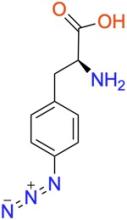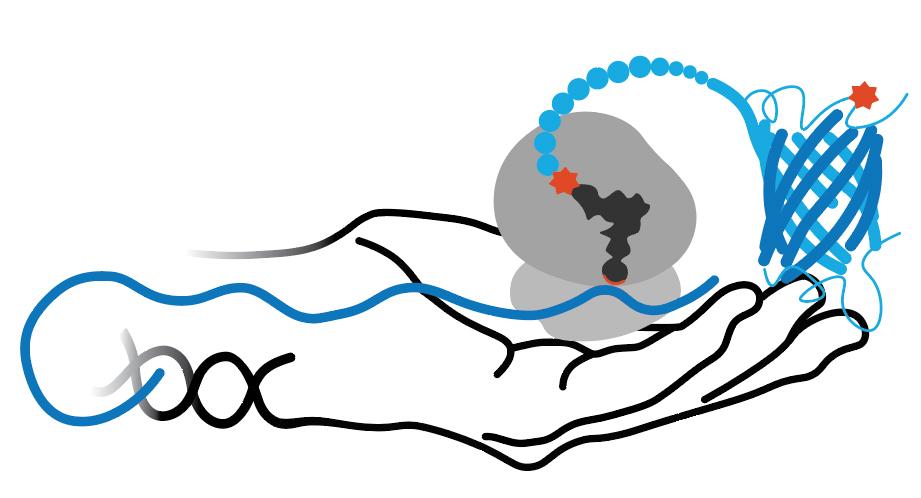RS/tRNA Foundational Publication Support
Takimoto, Jeffrey K, Katrina Adams, Zheng Xiang, and Lei Wang. (2009) 2009. “Improving Orthogonal Trna-Synthetase Recognition For Efficient Unnatural Amino Acid Incorporation And Application In Mammalian Cells.”. Molecular Biosystems 5 (9): 931-4. doi:10.1039/b904228h.
RS/tRNA Pair Development Year
2009
ncAA(s) Incorporated
p-azido-L-phenylalanine (pAzF)
ncAA Structure (png, jpg, jpeg)

ncAA Utility
Used as a photocrosslinker, allowing for crosslinking and bioorthogonal ligation of protein.
RS Organism of Origin
Parent RS
RS Mutations
Y37L
D182S
F183M
L186A
D265R
D182S
F183M
L186A
D265R
tRNA Organism of Origin
Parent tRNA
tRNA Anticodon
CUA
RS/tRNA Availability
Can be ordered from AddGene Plasmid #105829, the plasmid contains the E2AziRS but has a B.stearothermophylus Tyr tRNA instead of E.coli Tyr tRNA.
RS/tRNA Additional Notes
In HeLa cells,
By way of a fluorescence assay using GFP139TAG(Green Fluorescent Protein), it was shown that flouresence intensity of the protien was 186% greater for it compared to WT.
In HEK293T cells ,
Testing using E.coli GST (Glutathione S-Transferase) for Azi incorporation at 3 TAG sits ( Asn87, Tyr92, and Val125). Grown in presence of 1mM Azi and photocrosslinking performed by exposing the cells under 365mm UVlight for 10 min. Showed ~2.3 fold increased GST protien yield compared to TyrRS and AziRS.
NOTE: For use in mammalian work with EAzi3RS instead which uses the E2AziRS but has a B.stearothermophylus Tyr tRNA instead of E.coli Tyr tRNA.
By way of a fluorescence assay using GFP139TAG(Green Fluorescent Protein), it was shown that flouresence intensity of the protien was 186% greater for it compared to WT.
In HEK293T cells ,
Testing using E.coli GST (Glutathione S-Transferase) for Azi incorporation at 3 TAG sits ( Asn87, Tyr92, and Val125). Grown in presence of 1mM Azi and photocrosslinking performed by exposing the cells under 365mm UVlight for 10 min. Showed ~2.3 fold increased GST protien yield compared to TyrRS and AziRS.
NOTE: For use in mammalian work with EAzi3RS instead which uses the E2AziRS but has a B.stearothermophylus Tyr tRNA instead of E.coli Tyr tRNA.
